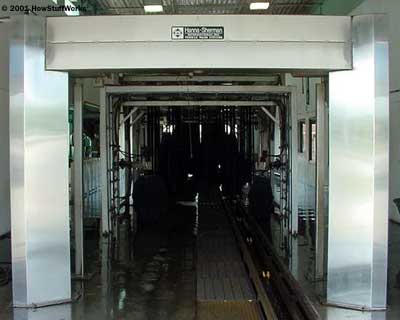 A look inside a typical automated car wash.
A look inside a typical automated car wash.
Let's face it. Most of us have a car or truck and we enjoy driving it, especially when it's shiny and clean. For this reason, car washes have remained popular ever since two Detroit men opened the first one, the Automated Laundry, in 1914. A lot of people wash their own cars at home, but the convenience of an automated car wash and relatively low cost can be hard to beat.
Car washes fall into five categories:
In this article, we will focus on the conveyor-driven systems used in exterior-only and full-service systems. You will learn about each step of the process and see the machinery that makes it happen. So sit back, make sure that your windows are closed and that your antenna is down. Let's enter the tunnel.
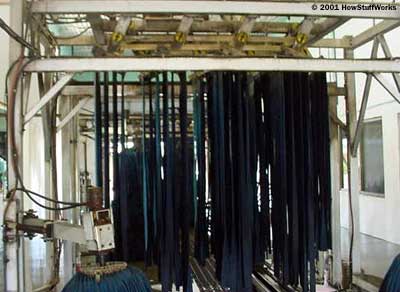 A typical car wash uses less than half the amount of water you would use to wash your car at home.
A typical car wash uses less than half the amount of water you would use to wash your car at home.
Operating a car wash is a competitive and often stressful business. Because the revenue per car is very low, you have to wash a lot of cars to make a reasonable profit. Probably the biggest factor in this business is the weather. If it is raining, people do not go to the car wash. In fact, a frustrating problem for car-wash owners is the forecast of bad weather. Whenever the forecast calls for rain or some other precipitation, people don't get their cars washed because they figure that the bad weather will make it a wasted effort.
An interesting fact is that most car washes use substantially less water to wash your car than you would use if you were washing it yourself at home. For example, one report says that washing your car at home typically uses between 80 and 140 gallons (304 and 532 L) of water, while a car-wash facility (without a high-pressure wash) averages less than 45 gallons (171 L) per car. In addition, all of the chemicals and detergents are washed into the sewer when you wash your car at home, but a car-wash facility must dispose of the waste in accordance with local regulations. This means that washing your car at a car-wash facility is usually better for the environment.
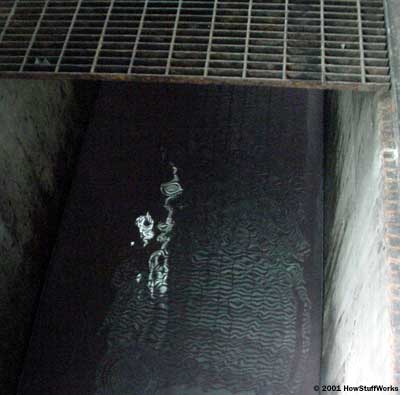 This pit captures the water that runs off the cars and recycles it.
This pit captures the water that runs off the cars and recycles it.
To cut down on the amount of water used, a lot of car washes recycle water. The recycled water is normally used in the early rinses and to mix with the detergents. It may also be used in the high-pressure washer. It should never be used in the final rinse.
There you have it! Next time you pull up to the car wash, you will know just what each machine is doing. Be sure to check out the links on the next page for additional information.
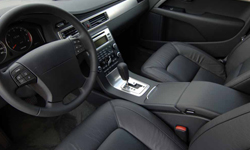
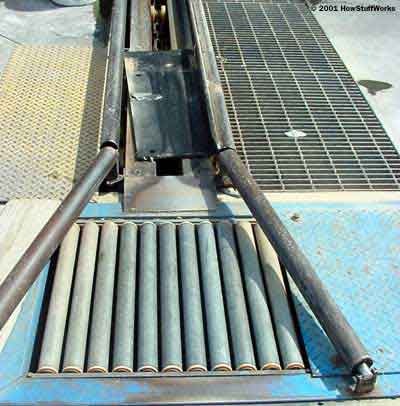 The correlator in this system is a set of long rollers.
The correlator in this system is a set of long rollers.
Car washes are normally either touchless or cloth friction wash. A touchless car wash relies on high-powered jets of water and strong detergents to clean the car. Only the water and cleaning solutions actually come in physical contact with the car.
Cloth friction wash systems use soft cloth that is moved around against the surface of the car. The system that we will discuss uses cloth friction wash technology, but quite a few of the same components are used in touchless car washes.
First, the car is placed on the conveyor track. At the beginning of the conveyor is a device called a correlator. This is simply a series of wheels or rollers that allow the wheel of the car to slide sideways until it is aligned with the conveyor.
The car is turned off and placed in neutral. Most conveyor systems have small rollers that pop up behind the wheel once it is on the conveyor. The roller pushes the wheel forward, causing the car to roll along through the tunnel, which is the term used to describe the long bay used for exterior-only and full-service systems. There are two standard types of conveyor systems:
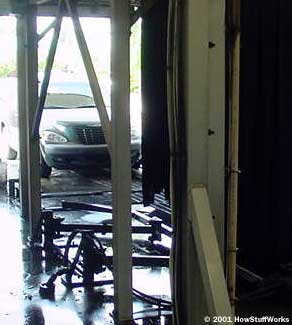 This car wash uses RWP to pull the car along the conveyor system.
This car wash uses RWP to pull the car along the conveyor system.
Once the car enters the tunnel, it passes through an infrared beam between two sensors, called eyes.
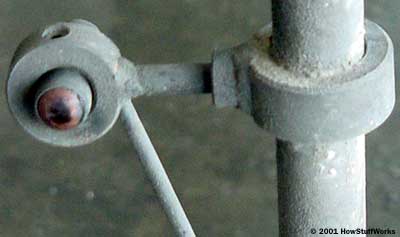 The eye on one side emits infrared light that is picked up by the eye on the other side.
The eye on one side emits infrared light that is picked up by the eye on the other side.
As soon as the beam is interrupted, the eyes send a signal to the digital control system (DCS), the computer that runs the automated portion of the car wash. By measuring the amount of time that the signal is interrupted, the DCS determines the length of the vehicle and adjusts the system accordingly.